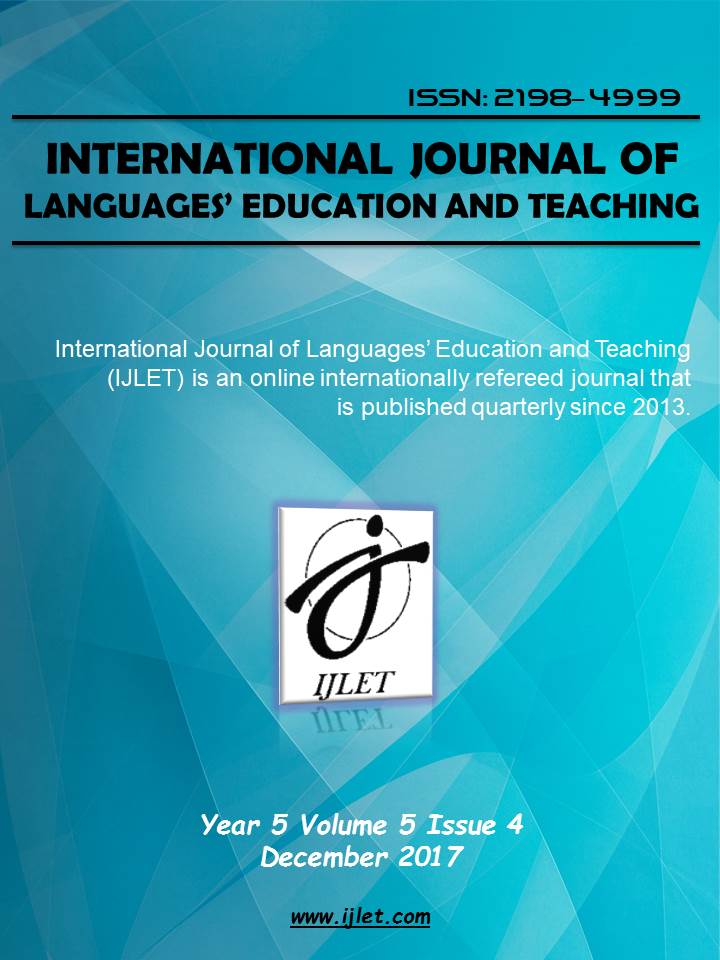Author :
Abstract
Keywords
Abstract
Advertising is a prominent discourse type which is inevitably linked to a range of disciplines. This study examines the language of a non-product advertisement, not isolating it from its interaction with other texts that surrounds it. It is based on Norman Fairclough’s Critical Discourse Analysis (CDA) framework in which there are three levels of analysing texts: Description, Interpretation and Explanation. In addition to analysing the advertisement at hand in terms of these three levels, the study includes semi-structured interviews conducted with English language teacher candidates. The purpose is to explore the social function of advertising not only from sounds, sights and language of the text, but also assess the impact of these on people. Findings from inductive content analysis point to the fact that there is a close connection between the advertisement discourse and the “teacher” image in the minds of participants.
Keywords
- Abdelaal, N. M. & Sase, A. S. (2014). Advertisement analysis: A comparative critical study. Advances in Language and Literary Studies, 5(6), 254-259.
- Ahmed, N. (2000). Cross-cultural analysis of advertising from the United States and Indian. Retrieved from www.dissertstion.com/library/1120842a.htm
- Bloor, M. & Bloor, T. (2007).The practice of critical discourse analysis. An Introduction. London: Hodder Education.
- Fairclough, N. (1992). Discourse and scial change. Cambridge: Polity Press.
- Foucault, M. (1975).Discipline and punishment: The birth of the prison. New York: Vintage Books.
- Gee, J. P. (1999). An introduction to discourse analysis: Theory and method. Routledge, New York.
- González Ruiz, S. (2014). The discourse analysis of cosmetic advertising: Max Factor’s discursive development from 1940 to the present. Retrieved from https://uvadoc.uva.es/bitstream/10324/8022/1/TFG_F_2014_40.pdf
- Halliday, M.A.K. (1994). Introduction to functional grammar. London Edward Arnold.
- Kress, G. & L. Van, T. (1990). Reading images. Geelong, Victoria: Deakin University Press.
- Lunga, V. B. (2006). Unpacking stanbic bank's pan African brand campaign using critical discourse analysis. Retrieved from www.ub.bw/cad/cssu/profiles/lunga.pdf.
- O'keeffe, A. (2011). Media and discourse analysis. Retrieved from https://dspace.mic.ul.ie/bitstream/handle/10395/1681/O%20?sequence=2
- Tahmasbi, S. & Kalkhajeh, S. G. (2013). Critical discourse analysis: Iranian banks advertisements. Asian economic and financial review, 3(1), 124.
- Vahid, H. & Esmae'li, S. (2012). The power behind images: Advertisement discourse in focus. International Journal of Linguistics, 4(4), 36.
- van Dijk, T. A. (1985). The handbook of discourse analysis. London: Academic Press.
- van Dijk, T. A. (1998). Ideology: A multidisciplinary approach. Sage.
- Williams, K. (2003). Understanding media theory: Representation, audience, ideology, effects, production, text. London: Hobber Arnold.
- Wodak, R. (1996). Disorders of discourse. London: Longman.
- Woods, N. (2006). Describing discourse: A practical guide to discourse analysis. Oxford: Oxford University Press.
- Zhang, Y. & Wildemuth, B. M. (2016). Qualitative analysis of content. Applications of Social Research Methods to Questions in Information and Library Science, 318.
